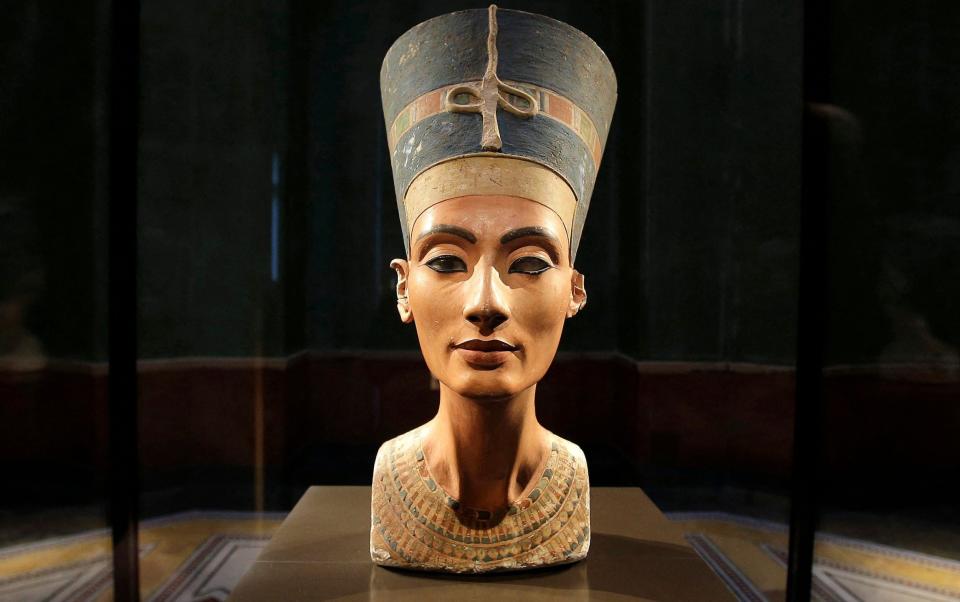Queen Nefertiti's true beauty could soon be revealed

With her slender neck, wide eyes and high cheekbones, the Egyptian queen Nefertiti has long been viewed as the embodiment of female beauty.
Now, archaeologists may finally be close to identifying her mummy, in a discovery which could reveal the true face of the monarch at long last.
Egyptologist Zahi Hawass, the former minister of state for antiquities affairs in Egypt, has been carrying out excavations in the Valley of the Kings in modern day Luxor, and claims to have found two unnamed mummies.
He believes one mummy is Nefertiti and the other her daughter, Ankhesenamun, who was the wife of Tutankhamun.
“In October we will be able to announce the discovery of the mummy of Ankhesenamun, Tutankhamun’s wife, and her mother, Nefertiti,” Prof Hawass told Newsweek.
“I am sure that I will reveal which of the two unnamed mummies could be Nefertiti.”
The mummies are believed to be from tombs KV21 and KV35 in the Valley of the Kings in Luxor.
Dr Hawass said that if DNA analysis definitively identified Nefertiti’s mummy, Egypt would commission CT scans of the head that would “reveal the most complete and accurate image of the queen”.
He added: “We have barely found 30 per cent of everything that is underground.
“Modern Egypt is built on the Ancient. And that is why the heritage that remains hidden is immense.”

Nefertiti reigned during Egypt’s 18th dynasty, and lived between roughly 1370 and 1330 BC, when Egypt was at its most powerful and prosperous.
But by the time she died, the country was experiencing a period of social turmoil which led to her grave site being lost.
She ruled alongside her husband, Amenhotep IV, who converted the country from polytheism to a monotheistic cult solely dedicated to the sun’s disc, which was named Aton.
Amenhotep changed his name to Akhenaten, meaning “beneficial to Aten” and built a new capital city away from Thebes, which he named Akhetaten - meaning “horizon of the god Aten”.
But the changes proved unpopular, and after his death Tutankhamun restored the pantheon of gods and destroyed or defaced the monuments associated with Akhenaten. It was during this period that details of their burials were lost.
Nefertiti died in 1331 BC and was supposed to be buried alongside her husband in the Royal Tomb of Akhenaten, but neither body was found there and it assumed they were taken back to the Valley of the Kings.
There was speculation that she was interred in a large chamber behind a concealed door in the tomb of King Tutankhamun.
But in 2018, the Egyptian Antiquities Ministry announced that a three year investigation involving radar scans of the tomb had proved conclusively that there was no secret room.
There was also speculation that Nefertiti was one of two mummies found by archaeologist Giovanni Belzoni in 1817 while excavating tomb KV21 in the Valley of the Kings.
But later DNA testing has proven inconclusive and Dr Hawass believes Nefertiti and Ankhesenamun could be buried elsewhere.
Interest in Nefertiti was revived in 1912 when Ludwig Borchardt, a German archaeologist, uncovered a beautiful bust of the Queen among the ruins at Akhetaten.

Borchardt said the face was so lifelike that he thought he had discovered a human body.
The name Nefititi translates as “the beautiful one has come” and measurements of the bust conform to the “golden ratio” of beauty, in which all features are perfectly in proportion.
A hieroglyphic tablet found in the ruined city, describes her as “The leading woman of all the nobles, great in the palace, perfect of appearance”.
Some academics even believe that Nefertiti ruled briefly on her own as Neferneferuaten after her husband’s death and before Tutankhamun became pharaoh.


